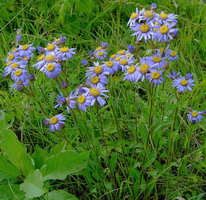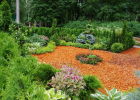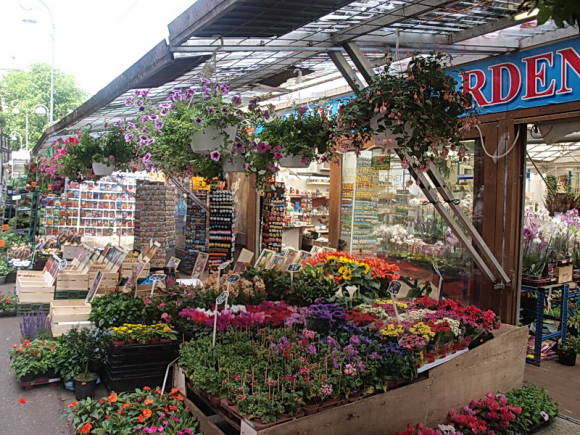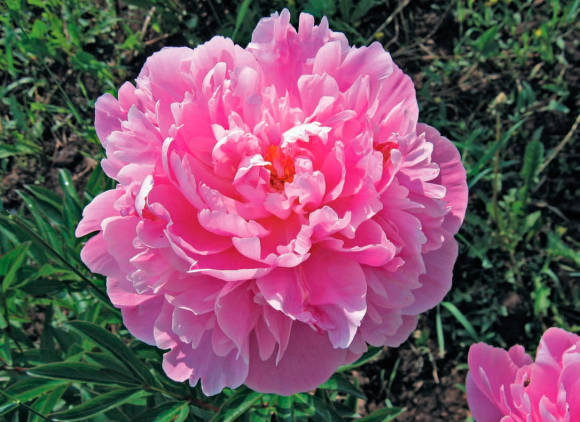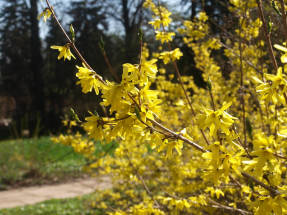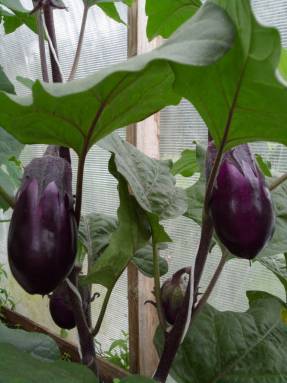 The development of any plant is largely determined by the state of the root system. The easiest way to enhance the development of the root system is to stimulate the development of adventitious roots. To increase the root system of tall tomatoes, 2-3 lower leaves are removed from the main stem and the seedlings are planted obliquely at an angle of 45 °. Only the root ball is covered with soil, and the stem section after 12-14 days, when the plants take root well. Tomatoes are well grafted, and some skilled gardeners successfully use growing tomatoes on two or more roots. This method of grafting allows you to combine two or more plants into a single organism, to increase the area and uniformity of supply of plants with food, which has a beneficial effect on productivity. Of course, this is not an easy way to increase yields, but those who like to experiment should try it.
The development of any plant is largely determined by the state of the root system. The easiest way to enhance the development of the root system is to stimulate the development of adventitious roots. To increase the root system of tall tomatoes, 2-3 lower leaves are removed from the main stem and the seedlings are planted obliquely at an angle of 45 °. Only the root ball is covered with soil, and the stem section after 12-14 days, when the plants take root well. Tomatoes are well grafted, and some skilled gardeners successfully use growing tomatoes on two or more roots. This method of grafting allows you to combine two or more plants into a single organism, to increase the area and uniformity of supply of plants with food, which has a beneficial effect on productivity. Of course, this is not an easy way to increase yields, but those who like to experiment should try it. Tomatoes on "two roots"
This is a grafting of an additional root system of a neighboring plant to the main stem of a tomato. When picking, two plants are planted in one pot at a distance of 2 cm from each other. After the plants grow up a little, and their stems reach a thickness of 4 mm, inoculation is done by "bringing the tongue closer". To do this, on the stems of tomatoes (above the cotyledonous leaves) on the sides facing each other, a thin strip of skin 1.0-1.5 cm long is removed with a blade (Fig. 1). In places where the skin is removed, make oblique cuts - "splits" of the stem in the form of "tongues" 6-7 mm long and a depth of no more than half the thickness of the stem. In the rootstock, the incision is made in the direction from top to bottom, and in the scion, from the bottom up. (Fig. 2). The resulting splits in the form of tongues are carefully inserted into each other and fixed (Fig. 3).
 |  |  |
Strips of non-woven material 0.5 cm wide can be used as fixators (it is better not to use ordinary film for tomatoes, otherwise, at the place of fixation, due to the fact that the film "does not breathe", root rudiments are quickly formed). Small hairpins or hairpins are very suitable for fixing flower stalks in orchids. In any case, the strapping material should tightly fix the grafting site, but not overtighten or injure the stems. (Fig. 4). For 4-5 days, the plants are shaded from direct sun. You can put plastic bags on pots with plants for 2 days to maintain high humidity. Within 14 days, the plants grow together, if necessary, the strapping must be slightly loosened. After the plants grow together, the crown of the rootstock is removed slightly above the grafting site. (Fig. 5).
 |  |
Grafting tomatoes in a row
A very interesting method is when plants in a row are combined into a "single organism" by splicing two stepchildren from neighboring plants of the same variety. For plants planted in the ground, two stepsons are released below the first brush. Then the stepson of one plant is fused with the stepson of the neighboring plant by "bringing it closer to the tongue." Plants seem to "join hands" among themselves. If the plant is supposed to be grown in one stem, then above the grafting site, both tops of the stepsons are removed. If in two stems, then the top of the "unnecessary" stepson is removed, ie. "Rootstock" (Fig. 6... Diagram when grown in two stems).


In order not to accidentally damage the graft during the further care of the plants, it is necessary to provide for the fastening of both stepsons (for example, to the stake) before grafting. It should be fixed in two places - below the vaccination site (each stepson) and above the vaccination site (both together). Just below the graft, both stems together (so that the graft does not disperse after removing the wrapping). Since tomato stems thicken during the growing season, the fixation of the stems must be periodically loosened so that the strapping does not cut into the stem.
On grafted stepchildren, in places of convergence, you can remove several leaves for convenience and better ventilation of the plants.On the rootstock (when forming into two stems) or on both trimmed stepchildren (when forming into one stem), for the best result, it is necessary to leave several leaves, including one after the grafting site. All emerging shoots in the leaf axils must be removed in a timely manner.
